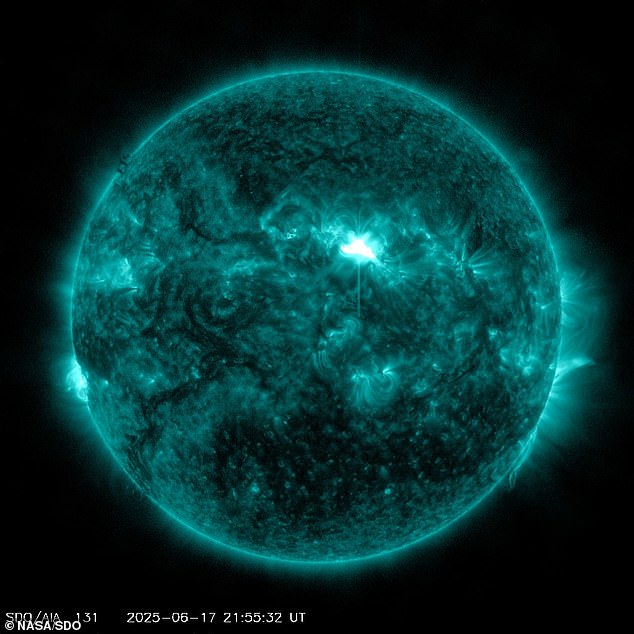
NASA Warns: Colossal Solar Radiation Burst Risks Widespread Blackouts Today
NASA Warns of Solar Flare Disruptions After Powerful X1.2 Eruption
A severe X1.2-class solar flare erupted from the sun on Tuesday, sparking warnings from NASA about potential communication blackouts and technology disruptions. The explosion, originating from sunspot region 4114 on the Earth-facing side of the sun, occurred around 6 p.m. ET and unleashed intense radiation, magnetic energy, and heat.
X-class flares are the most powerful category, with the numerical suffix indicating strength—higher numbers mean stronger eruptions. “X-class flares can trigger widespread impacts on satellites, radio communications, and power grids,” NASA explained.
[Image: Sun emitting a bright solar flare, with magnetic loops visible]
Immediate Impacts
The flare caused a shortwave radio blackout over the Pacific Ocean, affecting regions like the U.S. West Coast, Alaska, eastern Russia, Asia-Pacific, and New Zealand. Ham radio operators in Hawaii reported sudden signal losses shortly after the eruption.
Space weather physicist Dr. Tamitha Skov highlighted risks to GPS and radio-dependent systems, stressing the need for preparedness. “Delta-class magnetic fields, like those in sunspot 4114, act as pressure cookers for solar explosions,” she noted.
[Image: Dr. Tamitha Skov analyzing solar data on a screen]
Sunspot 4114: A Continued Threat
NASA and space weather agencies are closely monitoring sunspot 4114, which remains unstable. Experts warn another major flare could erupt soon, potentially compounding disruptions. The region’s “delta-class” magnetic configuration signals high risk, as these fields store energy capable of fueling intense eruptions.
Coronal Mass Ejection (CME) Alert
The flare likely hurled a coronal mass ejection (CME)—a burst of charged particles—toward Earth. Expected to arrive within 15–72 hours, this CME may trigger a G1-class geomagnetic storm by Friday. While G1 storms are minor, they can cause power grid fluctuations, satellite interference, and vivid auroras at high latitudes.
Lessons from a “Solar Storm Doomsday” Simulation
In May, experts conducted a simulation of extreme solar weather, revealing vulnerabilities in global infrastructure. A hypothetical “solar superstorm” caused catastrophic failures:
- Power grids collapsed across the U.S., with weeks-long outages on the East Coast.
- Satellite and radio systems failed, crippling communications and GPS.
- Rail lines and pipelines shut down, sparking fuel shortages and travel chaos.
The exercise underscores the need for improved preparedness, including enhanced space weather monitoring, better forecasting models, and cross-government coordination.
Looking Ahead
While this week’s flare isn’t catastrophic, it highlights the sun’s unpredictable nature. Scientists urge investing in early-warning systems and resilient infrastructure to mitigate future risks. For now, skywatchers in northern regions can anticipate dazzling auroras as the CME arrives.
[Image: Vibrant aurora borealis lighting up a night sky]
Stay updated via NASA and space weather agencies for real-time alerts.
(Word count: ~600)


